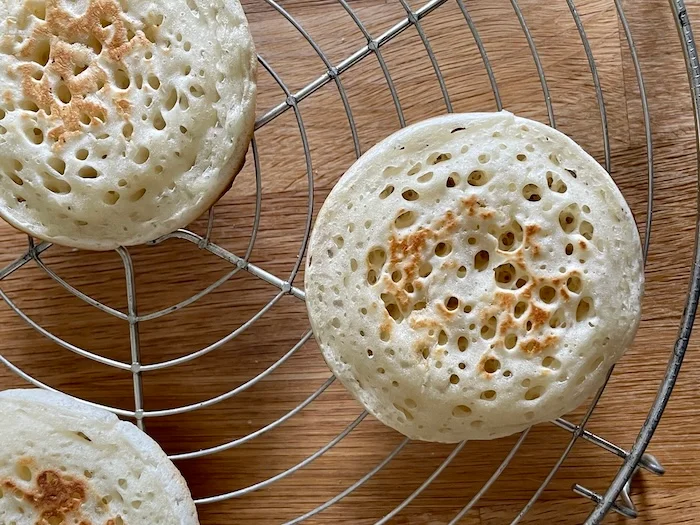No yeast crumpets – in search of a better honeycomb
Sharing this recipe for no yeast crumpets I developed and am quite proud of.

Sharing this recipe for no yeast crumpets I developed and am quite proud of.

My best attempt yet in my quest to make the fluffiest, shreddiest healthy-ish whole grain imbued shokupan: this 20% Rye Shokupan.
Recipe is adapted from Benito's Mochi SD Hokkaido Milk Bread recipe, a great recipe - all props to benito.
Nigella seeds add so much savoury depth to bread and works really well with sourdough. For anyone in Toronto, Blackbird Baking has a seeded loaf which uses a mixture that includes nigella seeds. Their seeded loaf was a staple for me many years ago. The defining feature of the loaf, I think, is definitely the addition of nigella seeds! Recipe here.